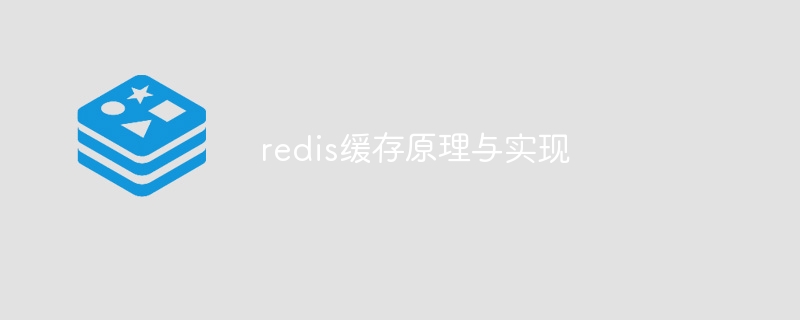Redis cache principle and implementation
- 下次还敢Original
- 2024-04-19 18:15:33952browse
Redis cache is an in-memory key-value store that improves application performance by storing frequently used data in memory. Its implementation principles include hash tables, jump tables, asynchronous I/O, memory mapping, replication and persistence and other technologies, which bring benefits such as improved performance, reduced latency, improved throughput and lower costs.

Redis cache principle
Redis cache is an in-memory data storage used to store frequently accessed data, thereby improving application performance. It is based on key-value pair model, which means it maps keys to values. When an application requires data, it first checks whether the data exists in the cache. If it exists, the application fetches the data directly from the cache without needing to access the database again. Otherwise, the application will retrieve the data from the database and store it in cache so that it can be accessed quickly next time.
Redis implementation
Redis uses two main data structures to implement caching:
- Hash table: Used to store key-value pairs, its time complexity is O(1).
- Skip table: Used to implement sorted collections, allowing fast search and range queries.
Redis also uses the following technologies to improve performance and reliability:
- Asynchronous I/O: Allows Redis to handle multiple I/O at the same time operation to avoid blocking.
- Memory mapping: Map Redis data directly into memory to access data quickly.
- Replication: Replicate data to multiple nodes to improve availability and fault tolerance.
- Persistence: Save data to disk to prevent data loss.
Benefits
Using Redis cache can bring the following benefits:
- Improve performance: Pass By caching frequently used data, applications can significantly reduce database accesses, thereby improving overall performance.
- Reduce latency: Retrieving data from the cache is much faster than retrieving data from the database, thus reducing application response time.
- Improve throughput: Redis can handle a large number of requests at the same time, thereby improving the throughput of the application.
- Reduce costs: Caching can reduce access to the database, thereby reducing the load and cost of the database.
The above is the detailed content of Redis cache principle and implementation. For more information, please follow other related articles on the PHP Chinese website!

